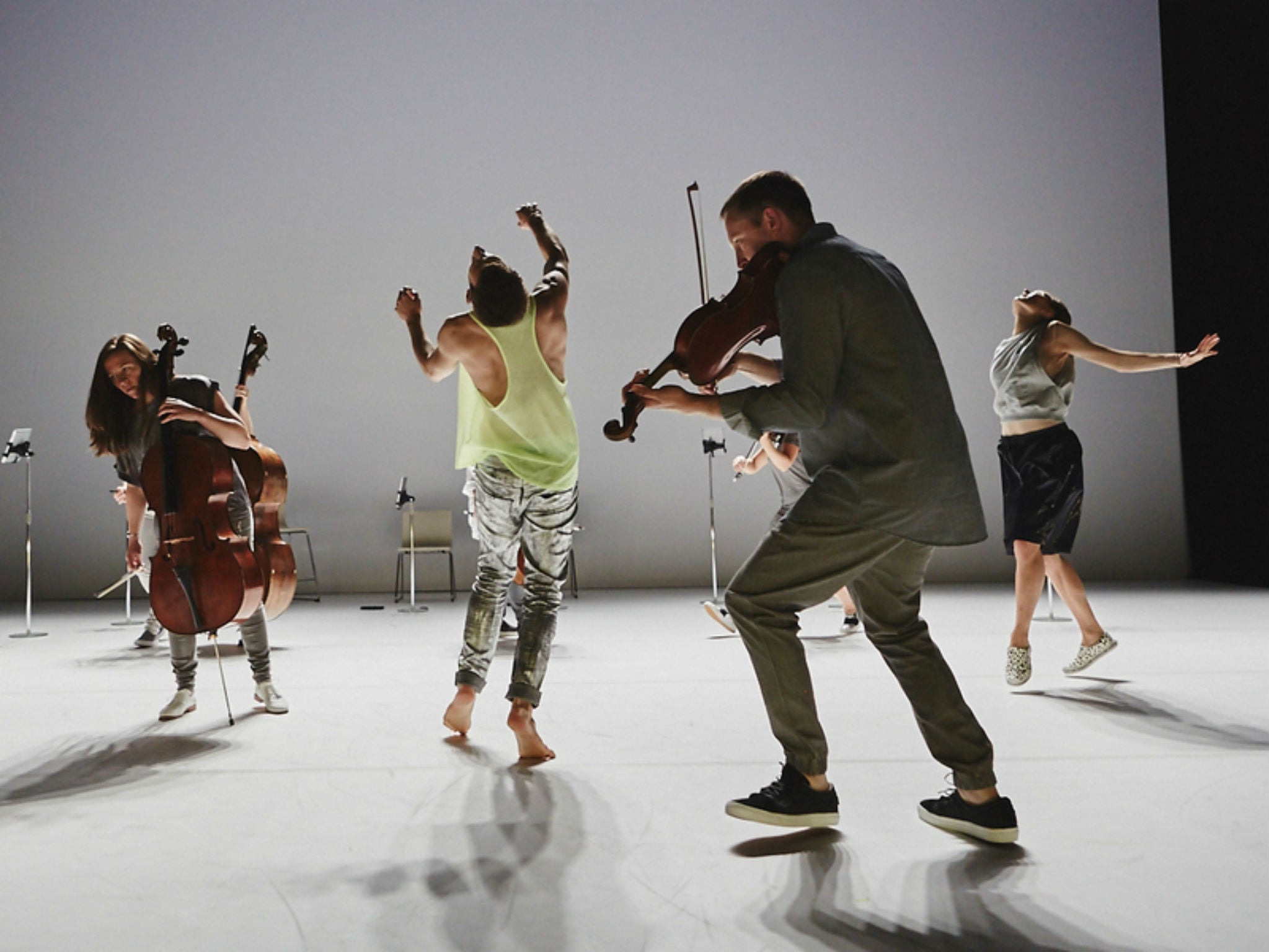Goldberg Variations, Barbican, London, review: A thoughtful and teasing take on Bach from both dancers and musicians
A collaboration between the string players of Scottish Ensemble and Swedish choreographer Örjan Andersson, where both sides feel like equal dancing partners

Playing Bach, playing with Bach: in Goldberg Variations, 11 musicians and five dancers share a performance of the score. There’s sound from the dancers – stamps, claps, comments on the music – and moments when the musicians plunge into dance, bodies swinging and stomping as they play. It’s both thoughtful and teasing, with an appealing sense of warmth among the cast.
Created in 2015, this production is a collaboration between the string players of Scottish Ensemble and choreographer Örjan Andersson of Andersson Dance, based in Stockholm. The music leads, in a string arrangement by Dmitry Sikovetsky, but both sides feel like equal dancing partners.
The first dance steps we see are flailing and uninhibited, all swung arms and frantic jiggles. It’s comic, almost a distraction, but more and more people join in until the players do too, everybody caught up in the same rush. It’s a beginning that undercuts the difference between trained and untrained movement. Sometimes the two blur together: a dancer reaches out to touch a violinist’s bow arm on the last note, so they seem to share the end of the phrase.
The choreography both comments on the music and responds to it. “This variation is in unison,” a dancer points out: the movement, like the sound, is performed together. A woman dances in silence, then explains that the next variation is a “character dance”. She repeats her steps when the music starts, then adjusts them – variation within a variation. Andersson’s choreography draws attention to details and layers of sound, to Scottish Ensemble’s warm string tone and lively rhythm.
It’s a quirky performance, and sometimes rests too heavily on whimsy, as if there weren’t quite enough ideas for all 30 variations. There are plenty of costume changes, with designer Bente Rolandsdotter dressing the performers in everything from plain outfits to disco glitter. Dancers run around with bits of lighting rig; one man strips off to dance naked.
Yet the production also has the confidence to strip things back. Individual dancers identify themselves with specific instruments, shivering and twitching as if possessed by sound. An early variation is described as one of the most beautiful: “I cannot dance to it.” They sit and listen instead.
The musicians have their own dance in near silence, putting their instruments down and moving to their own soundtrack of taps and claps. Goldberg Variations creates a touching sense of shared endeavour, of care for this music and the ideas it prompts.
Until 7 July (barbican.org.uk)
Subscribe to Independent Premium to bookmark this article
Want to bookmark your favourite articles and stories to read or reference later? Start your Independent Premium subscription today.

Join our commenting forum
Join thought-provoking conversations, follow other Independent readers and see their replies